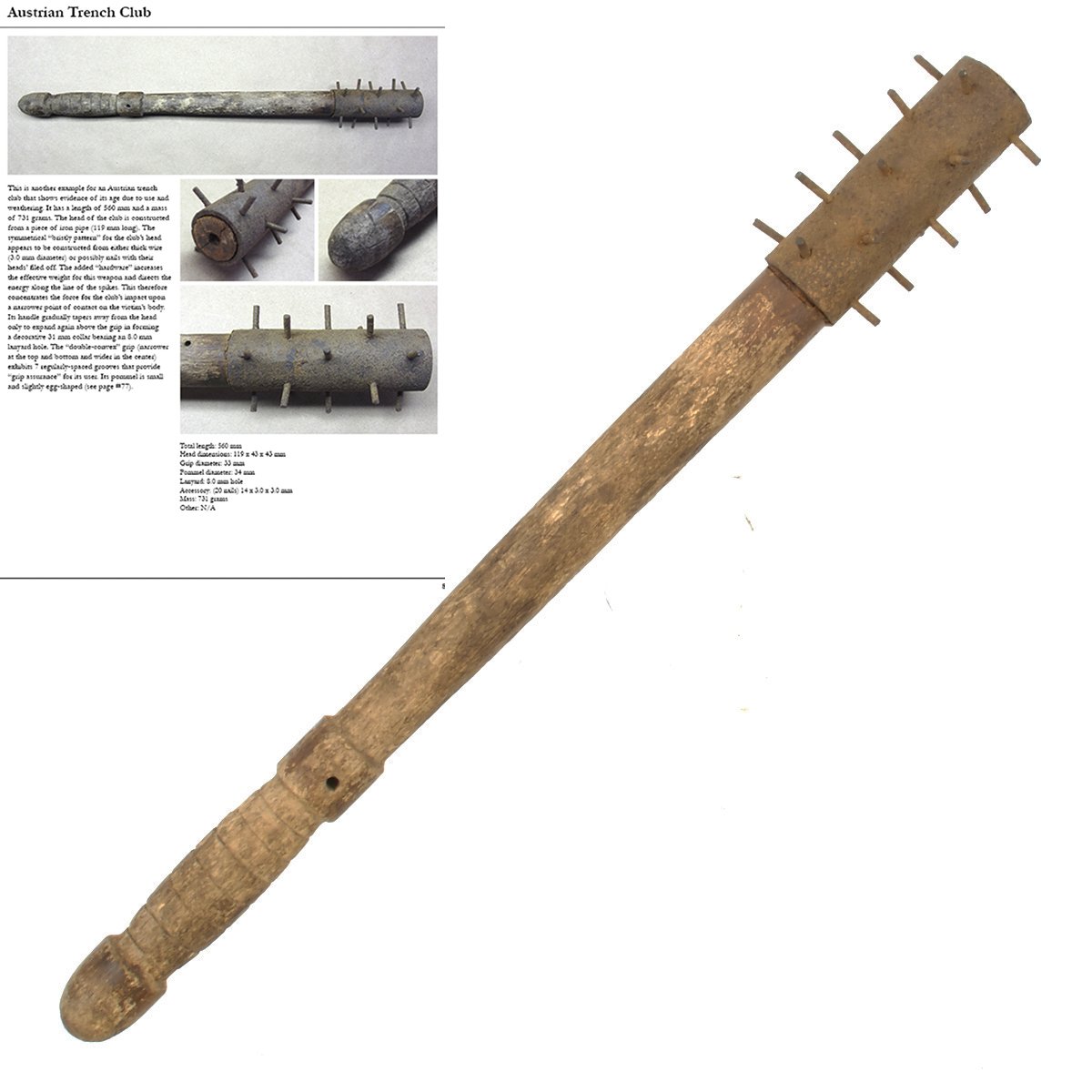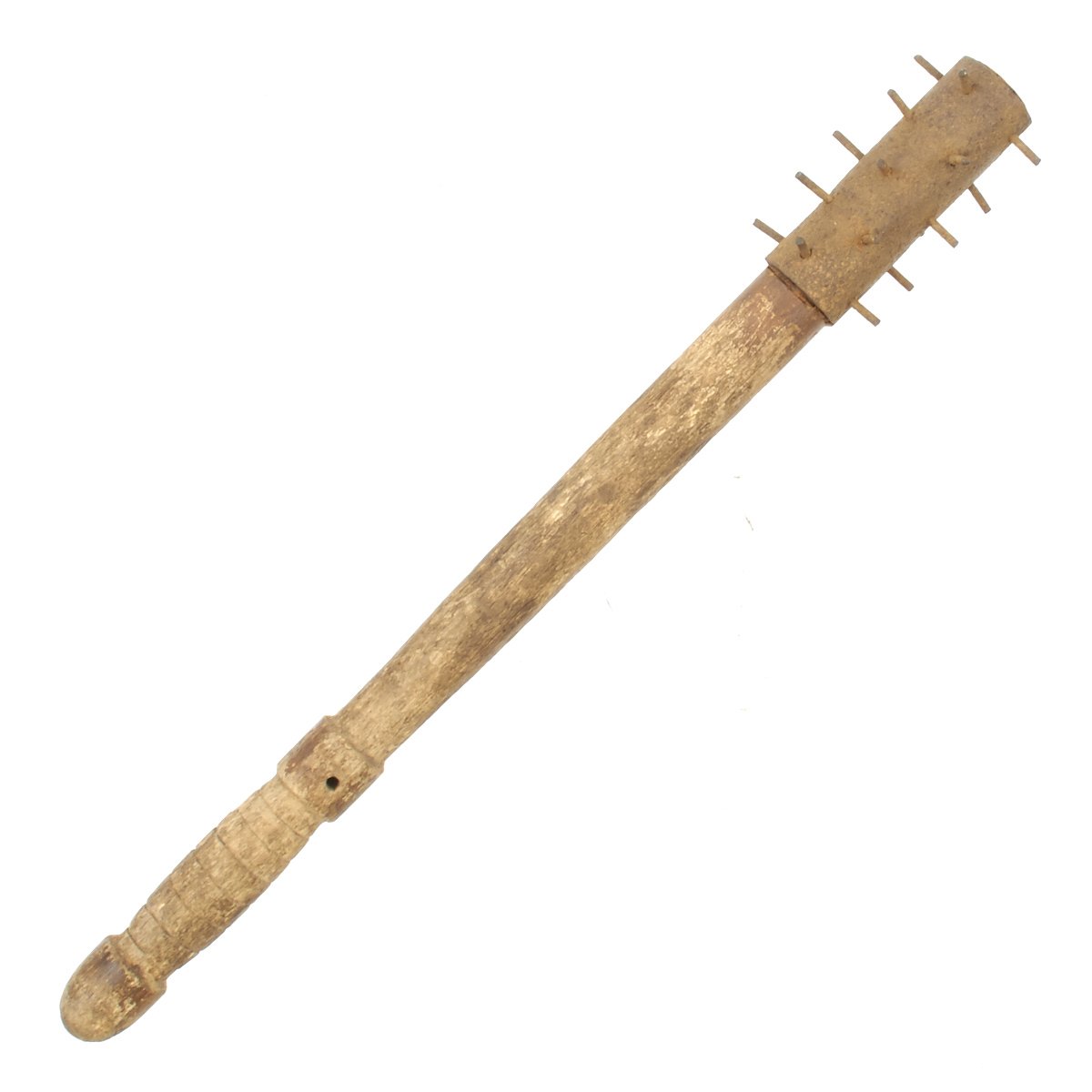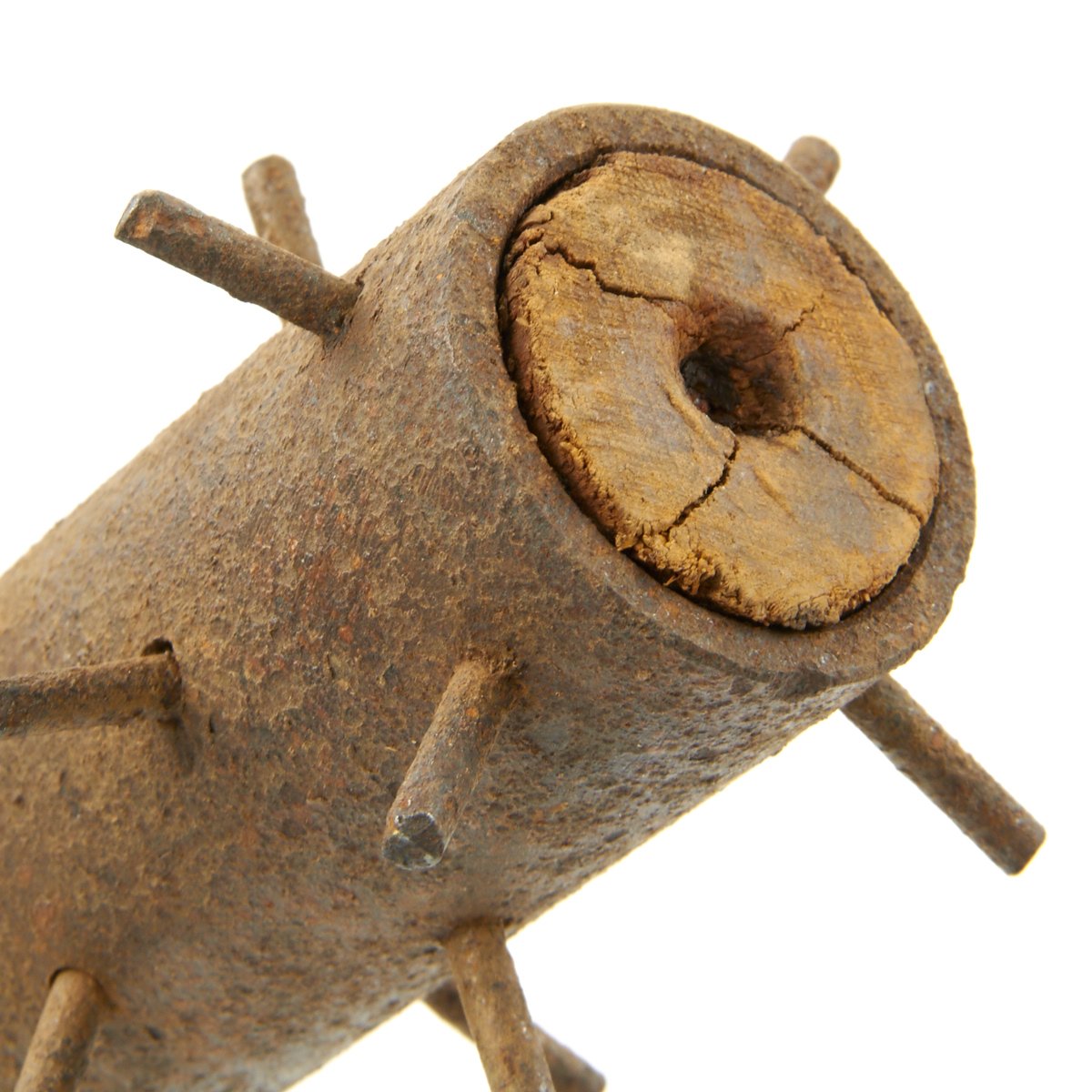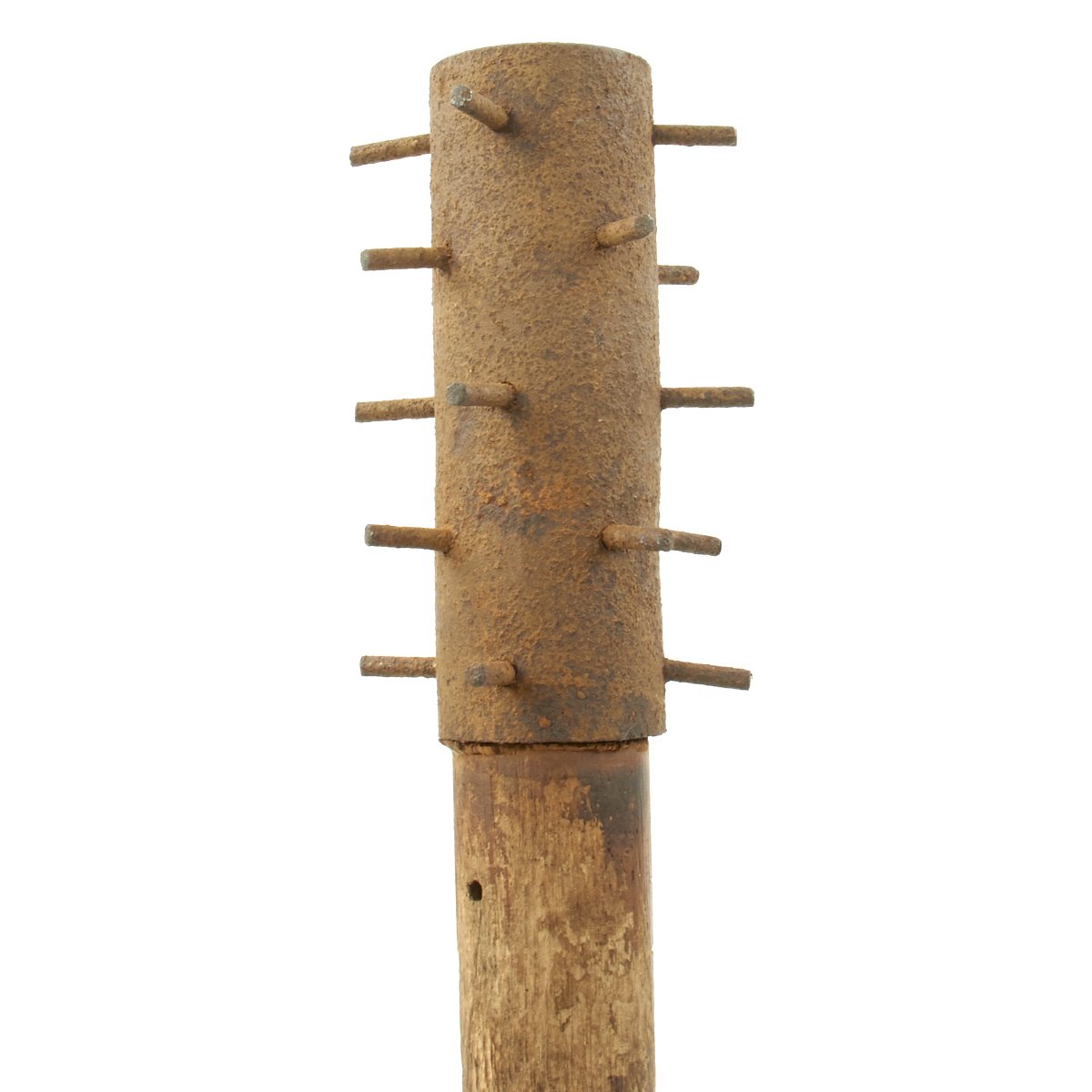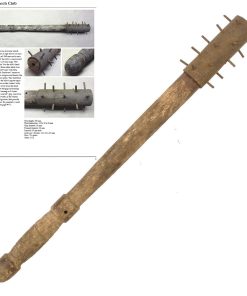Original Austro-Hungarian WWI Bristle Head Trench Raiding Club – Featured in Book At Arm’s Length Original Items
$ 1.895,00 $ 473,75
Original Item: Only One Available. A fantastic example of a World War One Austrian trench club that shows evidence of its age due to use and weathering. It has a length of 22 inchs (560 mm) and weighs 1.6 pounds (731 grams). The head of the club is constructed from a piece of iron pipe 4.7 inches longs. The symmetrical “bristly pattern” for the club head appears to be constructed from either thick wire (3.0 mm diameter) or possibly nails with their heads filed off. The added “hardware” increases the effective weight for this weapon and directs the energy along the line of spikes. This therefore concentrated the force for the club’s impact upon a narrower paint of contact on the victim’s body. Its handle gradually tapers away from the head only to expand again above the grip in forming a decorative 31 mm collar bearing an 8.0 mm Lanyard hole. The “double-convex” grip (narrower at the top and bottom and wider in the center) exhibits 7 regular-spaced grooves that provide “grip assurance” for its user. Its pommel is small and slightly egg-shaped.
Purchased from a collection used in At Arm’s Length Trench Clubs and Maces Vol. 2 by David F. Machnicki where this very club is featured on page 8! Please note that the attached page image from the book is copyrighted material and the use of the page is done by permission of the author.
Trench raiding clubs were homemade melee weapons used by both the Allies and the Central Powers during World War I. Clubs were used during nighttime trench raiding expeditions as a quiet and effective way of killing or wounding enemy soldiers. The clubs were usually made out of wood. It was common practice to fix a metal object at the striking end (e.g. an empty Mills bomb) in order to maximize the injury inflicted. Another common design comprised a simple stave with the end drilled out and a lead weight inserted, with rows of large hobnails hammered in around its circumference. Most designs had some form of cord or leather strap at the end to wrap around the user’s wrist. Bosnian soldiers serving in the Austro-Hungarian army were fond of using maces. They were also used by officers to finish enemy soldiers wounded by poison gas attacks.
Trench clubs were manufactured in bulk by units based behind the lines. Typically, regimental carpenters and metal workers would make large numbers of the same design of club. They were generally used along with other “quiet” weapons such as trench knives, entrenching tools, bayonets, hatchets and pickaxe handles – backed up with revolvers and hand grenades.
Fast Shipping with Professional Packaging
Thanks to our longstanding association with UPS FedEx DHL, and other major international carriers, we are able to provide a range of shipping options. Our warehouse staff is expertly trained and will wrap your products according to our exact and precise specifications. Prior to shipping, your goods will be thoroughly examined and securely secured. We ship to thousands clients each day across multiple countries. This shows how we're dedicated to be the largest retailer on the internet. Warehouses and distribution centres can be located throughout Europe as well as the USA.
Note: Orders with more than one item will be assigned a processing date depending on the item.
Before shipping before shipping, we'll conduct a thorough inspection of the items you have ordered. Today, the majority of orders will be delivered within 48 hours. The delivery time will be between 3-7 days.
Returns
The stock is dynamic and we cannot completely manage it because multiple stakeholders are involved, including our factory and warehouse. So the actual stock may alter at any time. It's possible that you may not receive your order once the order has been made.
Our policy is valid for a period of 30 days. If you don't receive the product within 30 days, we are not able to issue a refund or an exchange.
You can only return an item if it is unused and in the same state as the day you received it. You must have the item in its original packaging.
Related products
Uncategorized
Uncategorized
Uncategorized
Uncategorized
Uncategorized
Uncategorized
Australian WWII Owen MK1 Machine Carbine SMG Custom Fabricated Replica with Sling Original Items
Uncategorized
Uncategorized
Uncategorized
Uncategorized
Uncategorized
Angolan Rebel 1970s era 60mm Inert Display Mortar from Angolan Civil War Original Items
Uncategorized
Uncategorized
Uncategorized
Uncategorized
Uncategorized
Uncategorized
Uncategorized
